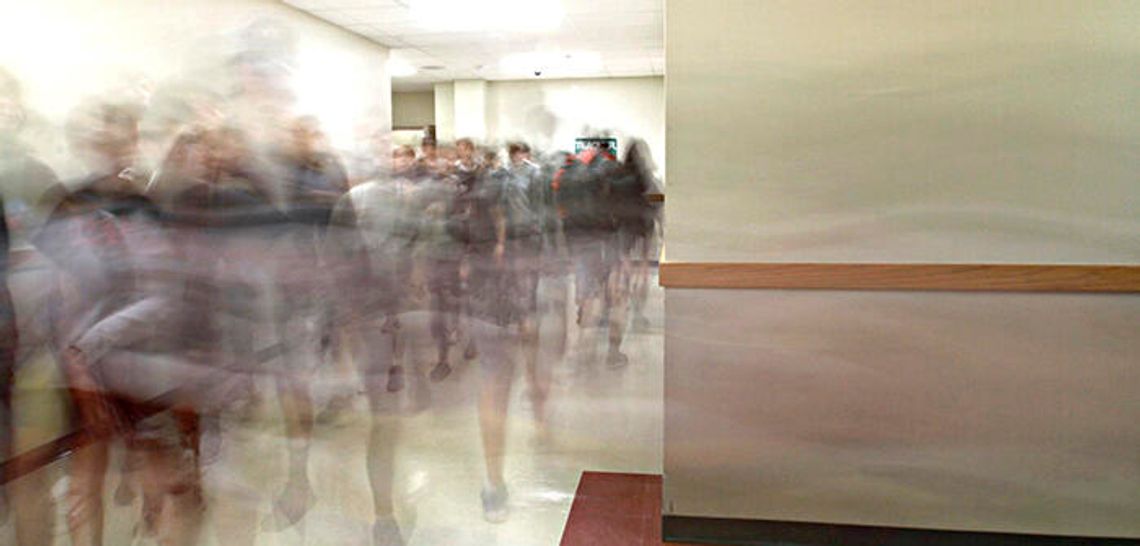How Dripping Springs ISD will approach secondary education over the next century is now at the community’s doorstep.
While a formal decision won’t be made for a few more years, Dripping Springs ISD Superintendent Bruce Gearing said residents will be on the clock to determine the number of high schools needed for a rapidly growing populace.
According to district demographer reports, Dripping Springs High is estimated to have a student population of 3,325 students by 2025, which would place the current campus at 125 percent capacity.
“This is probably a 100-year community decision,” Gearing said. “What happens at the end of this process will determine how this community grows for a long time. We want to get it right as much as possible.”
Gearing kickstarted the one versus multiple high schools discussion during the Feb. 21 Facilities and Long-Range Planning meeting. Gearing said starting the process now, and giving the community a year or so to decide what to do, is key as several critical deadlines loom.
Should a decision to build another high school move forward, the district would have to start planning for it by late 2019 or early 2020. The last chance to possibly call a bond election for a high school facility would be 2022.
Ultimately, Gearing said a solution would have to be in place by the 2025-26 school year. According to district demographer reports, Dripping Springs High is estimated to have a student population of 3,325 students by 2025, which would place the current campus at 125 percent capacity.
By 2035, Dripping Springs ISD is estimated to have a high school student population ranging between 6,400 and 7,400 students when total build out is slated to occur. Total build out is the student population in a district when the growth stops.
Other factors include assessing the amount of space DSISD will have to work with down the road. Dripping Springs High, which will soon accommodate for 2,500 students, has 17 open acres for possible expansion, but is essentially landlocked. The district also owns 155 acres along Sawyer Ranch Road and Darden Hill near RM 1826 that could allow for a new high school, middle school and elementary school.
Finding out what solution is the best fit for Dripping Springs ISD will be a decision made by its residents and not the district, Gearing said. However, offering different solutions crafted by districts facing similar growing pains was part of Gearing’s presentation to stakeholders.
Jason Johnson, principal at Allen High, which has the largest high school student enrollment in Texas at roughly 7,000 students, said the decision to remain as one campus was made in the mid-1990s to preserve a sense of community. While the district has adhered to that vision, challenges persist in maintaining equity, as well as allowing for opportunity in extracurricular activities.
Hays CISD Superintendent Eric Wright, who is overseeing the opening of the district’s third high school, said rationale for multiple campuses stemmed from keeping them efficient, but small enough to have students participate in programs. Struggles exist, however, in navigating and equalizing the rezoning process.
Community buy-in was an initial challenge felt by Rockwall ISD when it opened Rockwall-Heath High, the district’s second high school, said Tom Maglisceau, RISD Chief Student Services Officer.
“You have an entire community that grew up and went to that high school and then comes this second school,” said Maglisceau. “We don’t get the attendance at our games than at Rockwall High. That’s something our fans note.”
Rachel Sashen, an area resident with students in Dripping Springs ISD, said hearing all possible options for solving the high school issue was helpful. However, Sashen said she didn’t prefer Allen High’s mega-school solution for DSISD, based on overcrowding issues.
While she sees both sides of the one versus multiple schools argument, Sashen said tax base and growth patterns are primary factors that could impact the discussion.
Allan McAiden, who has had students attend DSISD in the past, said the district is “smart in getting ahead of the growth” and considering its options. McAiden said he leaned toward a second high school with smaller student populations, citing benefits for students and staff.
Gearing said his preference was a second high school for DSISD; Gearing said smaller high schools are “better educationally” for students. However, Gearing said the next year could allow community members to think creatively.
“I’m glad we have a year to go through and think about what those options are for this generation and the next generation, our grandkids and great-grandkids,” Sashen said.










